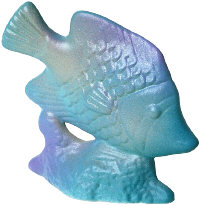puzzle 1
puzzle 2
puzzle 3
queries
Spanish notes
Russian lesson
etymology
poisson
contact me
A COMPLETE BEGINNER'S GUIDE TO POISSON DISTRIBUTION (It's the beginner that's complete, not the guide)
 If you toss a coin ten times the
probability of getting heads is 50%. You may get eight
heads and two tails, but that's only because the
sample is small. If you tossed it 100 times or 1000 times
your result would be nearer to 50%. So forget about the
actual numbers for a moment - the statistical probability
is reckoned to be 50%.
If you toss a coin ten times the
probability of getting heads is 50%. You may get eight
heads and two tails, but that's only because the
sample is small. If you tossed it 100 times or 1000 times
your result would be nearer to 50%. So forget about the
actual numbers for a moment - the statistical probability
is reckoned to be 50%.
Now suppose you had a small square room with all the
floor covered with 100 open topped boxes. If you threw
100 tennis balls into the air randomly, they would all
land in the boxes. The chances of them all going into one
box is very remote. The chances of 100 balls going into a
separate box each is very remote. So what is the
expectation? Is it possible that the number of empty
boxes is going to be a fixed amount in statistical terms?
And the number of boxes containing one ball? If it is a
fixed number, what is it? Would you guess that 25% would
be empty? 33.3%? 50%?
In fact the probabilities here are fixed. In the same way
as tossing a coin, the actual result may not be too
accurate with 100 boxes but it will be with 10,000 or 1,000,000.
And the results are found in Poisson distribution tables.
Say you have 10,000 boxes and 10,000 balls. The number of
empty boxes will be 3679. And the weird thing is that the
number of one-to-the-box balls is also 3679. The second
weird thing is that the number of two-to the-box balls is
also 3679 and they will occupy 1839 boxes. Then the
number of three-to-the-box balls is also 1839 and they
will occupy 613 boxes. The number of four-to-the-box
balls is also 613 and they will occupy 155 boxes. I'll
set it out in a table:
| 3679 | boxes have | 0 | balls in each. | Total number of balls in these boxes is | 0 |
| 3679 | boxes have | 1 | ball in each. | Total number of balls in these boxes is | 3679 |
| 1839 | boxes have | 2 | balls in each. | Total number of balls in these boxes is | 3678 |
| 613 | boxes have | 3 | balls in each. | Total number of balls in these boxes is | 1839 |
| 153 | boxes have | 4 | balls in each. | Total number of balls in these boxes is | 612 |
| 31 | boxes have | 5 | balls in each. | Total number of balls in these boxes is | 155 |
| 5 | boxes have | 6 | balls in each. | Total number of balls in these boxes is | 30 |
| 1 | box has | 7 | balls in it | Total number of balls in this box is | 7 |
| 10000 | boxes total | and total balls is - | 10000 |
There are naturally some
slight inaccuracies here because the numbers are all
rounded. If you enter the formula POISSON(0,1,0) in a
spreadsheet, the actual number returned is 0.367879441171442322.
The rule is that
the number of x-to-the-box balls = the number of (x minus 1)-to-the-box
boxes.
So suppose you're a fledgling service provider company
and so far you've only got one telephone line. Let's
say people take a minute to log in, from the beginning of
each minute to the end of the same minute. So in 100
minutes you can log in 100 people. If they all do it
sequentially there's no queue anywhere and everybody
is happy. But because they are going to do it at random,
there are going to be queues and the poisson thing will
predict the queues. In fact it will predict that 36
people are served straight away, Another 36 will be in a
short queue waiting for one other. 18 people will be
third in the queue, 6 will be fourth and 1 will be fifth.
And I think it means, correct me if I'm wrong, that
36% of the time the line is standing idle. More or less.
I'd be very pleased if some expert would cast an eye over these calculations and let me know if I've got it right.
It's nothing to do with fish by the way, but a French mathematician called Simeon-Denis Poisson.